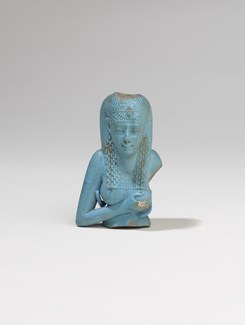Fragmentary Statuette of Isis

While the practice of divinizing a ruler was a novelty to Hellenistic society, the pharaohs had always been considered as direct descendants of the gods. Building on this heritage, the Ptolemies sought recognition as divine beings to achieve acceptance by the local priesthoods and the native populace, but also to set themselves apart from the other Hellenistic dynasties that were competing over the spoils of Alexander the Great’s empire.
The Egyptian triad of Isis, Osiris, and Horus became central to the religious and political narrative. In fact, the nature of Isis and Osiris, the married sibling gods and parents of Horus, was skillfully emphasized to establish a direct connection between the divine and royal Ptolemaic families.
The religious primacy of this divine triad allowed the Ptolemies to appropriate the indigenous tradition, adapt it to fit their claims for royal succession, and merge Egyptian gods with their Greek equivalents. This resulted in a vibrant era of religious experimentation that was visually expressed in major temple building projects as well as the creation of bronze statuettes of the three gods, several of which are on display in our galleries, and in faience, such as this depiction of the goddess Isis suckling the infant Horus.
E. Riefstahl. Ancient Egyptian Glass and Glazes in the Brooklyn Museum. The Brooklyn Museum, 1968. 110-11, no. 77.